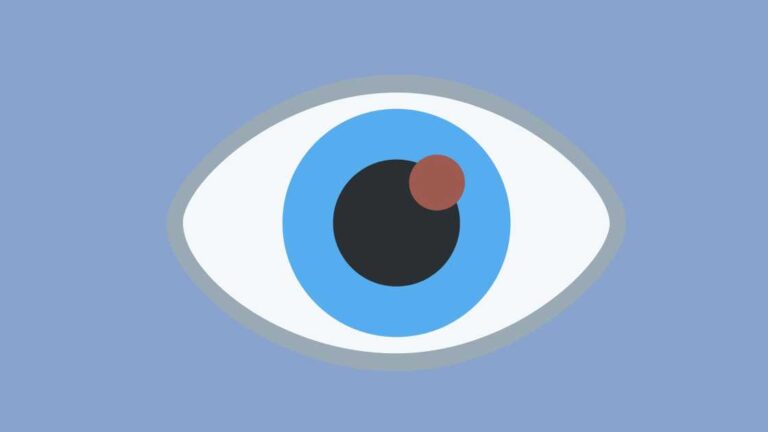The abrupt movement causes air pockets in the synovial fluid of the joints to react giving a popping or cracking sound when a person cracks their back. Although cracking the back may feel wonderful, it might cause harm and does not address any underlying issues that may be causing the pain.
In this article, we will take a look at the safest ways and techniques you can use to pop your own back
Ways you can pop your own back
Below are some ways that you can try to pop your own back. Care should be taken when using these methods. Do not try to overdo it or force anything.
Sitting rotation
The seated rotation exercise is recommended by the American Academy of Orthopedic Surgeons (AAOS) to extend the back. It involves movements that can cause a person’s back to break [source].
To do the seated rotation stretch, follow these steps:
- To begin, sit on the floor with both legs straight out in front of you.
- Cross your left leg over your right.
- Slowly twist toward the bowed left leg, supporting yourself with the left hand behind the torso.
- Place your right arm on the outside of your bent left thigh and twist a little more.
- Hold the stretch for around 30 seconds by looking behind your shoulder.
- Slowly return to the starting position.
- Repeat on the other side.
Cat and camel
The cat and camel technique is a back-stretching technique. During the stretch, your back may crack. To perform the cat and camel, one must:
- Begin on all fours, with your hands flat on the floor, shoulders in line, and knees in line with your hips.
- Raise your back into an arch and tuck your head between your arms.
- Hold the position for a few seconds.
- Return your spine to a neutral, flat position.
- Lower the stomach to the floor while arching the back and lifting the head to look up at the ceiling.
You can use the video below as a guide:
Standing lumbar extension
This is another technique you can use to pop your own back. Below is how to use the technique
- Place your palms along your back or at the top of your buttocks, with your fingers pointing down and your pinky fingers on either side of your spine, in a standing stance.
- Lift and extend your spine upwards, then arch backward while applying mild pressure to your back with your hands.
- Remember to breathe and hold this position for 10 to 20 seconds.
- You can move your hands further up your spine and execute the stretch at different levels if your flexibility permits it.
- The stretch may also be felt in your upper back or between your shoulder blades.
You can use the video below as a guide:
Back of chair stretch
This is a technique that involves the use of a chair on your back. To perform this technique;
- Sit in a chair with a firm back and shoulder blades that can fit over the top.
- Your fingers can be interlaced behind your head, or your arms can be extended up above your head.
- Relax by leaning back in your chair.
- Continue to lean back over the chair’s upper edge until your back fractures.
- By sliding your body up and down slightly, you can experiment with different heights.
- This stretch will be felt in your upper and middle back.
Chair twist
Another technique which involves the use of a chair on your back. To perform this technique;
- Sit on a chair and extend across your body with your right arm to grab the chair’s left side. The outside of your left leg or the seat of the chair should be where your right hand is.
- Raise your left arm behind you and hook it over the chair’s back.
- Keep your hips, legs, and feet looking forward while you rotate your upper body to the left as much as you can.
- To twist to the right, repeat similar actions on the opposite side.
- Begin twisting at the base of your spine. This stretch will be felt in your lower and middle back.
Bridge
Because the bridge is a more difficult portion, people should perform this method with caution. To do the bridge stretch, follow these steps:
- Lie on your back with your legs straight out in front of you.
- Bend your knees and plant your feet firmly on the ground.
- Straighten your arms in front of your body.
- Raise your hips towards the ceiling, aligning them with your torso and thighs.
- Place the weight of your body on your feet and shoulders.
- Hold the stretch for 30 seconds before slowly lowering your hips to the ground.
Kneeling back extension
Kneeling back extension is another stretch recommended by the AAOS for spine training. To do a kneeling back extension, follow these steps:
- Begin on your hands and knees, with your hands under your shoulders.
- Lean forward onto your arms and circle your shoulders, lowering your hips gently to the floor.
- Hold the position for around 5 seconds.
- Hold for 5 seconds while moving the buttocks toward the heels and extending the arms forward.
Seated twist
Another method you can try to pop your back is the seated twist. Here is how to perform the seated twist
- Sit on the floor with your left leg stretched in front of you and your right leg bent to the point where your knee is raised.
- Plant your right foot outside of your left knee to cross your right leg over the left.
- Maintain a long and straight spine.
- Turn to look over your right shoulder with your right hand on the ground behind your hips and your left elbow outside of your right knee.
- To deepen the stretch, press your arm and knee against each other.
- The twist should begin at the base of your spine. This stretch will be felt all the way down your spine.
Supine foam roller stretches
Supine is another way of saying that you are lying on your back. You can also use this technique to pop your back. Here is how to do it.
- Place a foam roller horizontally under your shoulders while lying on your back with your knees bent.
- Fingers can be intertwined at the back of your head or extended along the length of your body.
- Roll your body up and down over the foam roller, driving it into your back, using your heels as propulsion.
- You can roll up to your neck and lower back, or concentrate on your center back.
- You can slightly arch your spine if it’s comfortable for you.
- In each direction, roll 10 times.
- You’ll feel the massage and stretch all the way down your spine, and you may even get some adjustments.
Extension exercise
Lying on your stomach on the floor or a mat is an extension exercise. This stretch should only be attempted if the person is able to lie face down without experiencing any back pain. To do the extension exercise, follow these steps:
- Extend your arms over your head while lying flat on your stomach.
- The upper body is propped up on the forearms and elbows, with the hips pressed into the floor or mat.
- Raise the chest such that the upper body’s weight is supported by the hands.
- Hold the position for 30–60 seconds.
Benefits of popping your back
Back cracking has not been demonstrated to be beneficial. Stretching the back, on the other hand, can assist relieve mild pain and stiffness. Stretching, according to the American Council on Exercise, can help persons by:
- Preparing the back for the exercise strains
- Assisting in muscular relaxation and lowering muscle tension
- Lowering stress, enhancing posture, reducing stiffness, and expanding range of motion
- lowering the risk of injury
- Reducing aches and pains after a workout
- Increasing circulation helps to reduce the risk of lower back pain.
- Muscle function is being improved.
Can I pop someone else’s back?
It is not a good idea to try to break another person’s back. They can easily hurt the victim if they use too much force.
Risks of popping your back
Despite the little danger of significant injury, people should use caution while cracking their backs.
Injuries such as strains or muscle soreness might arise from using too much force. Furthermore, by cracking their back, a person may aggravate an underlying disease.
Back pain sufferers should see a doctor or physical therapist to learn safe back-cracking exercises. A trained specialist will know how to manipulate the spine without exerting excessive force.
The takeaway from this article
Back stretches can be used to crack a person’s back. Stretching has a number of other advantages, including injury prevention and improved range of motion. Anyone other than a licensed physical therapist or chiropractor should not attempt to crack a person’s back.








Leave a Comment